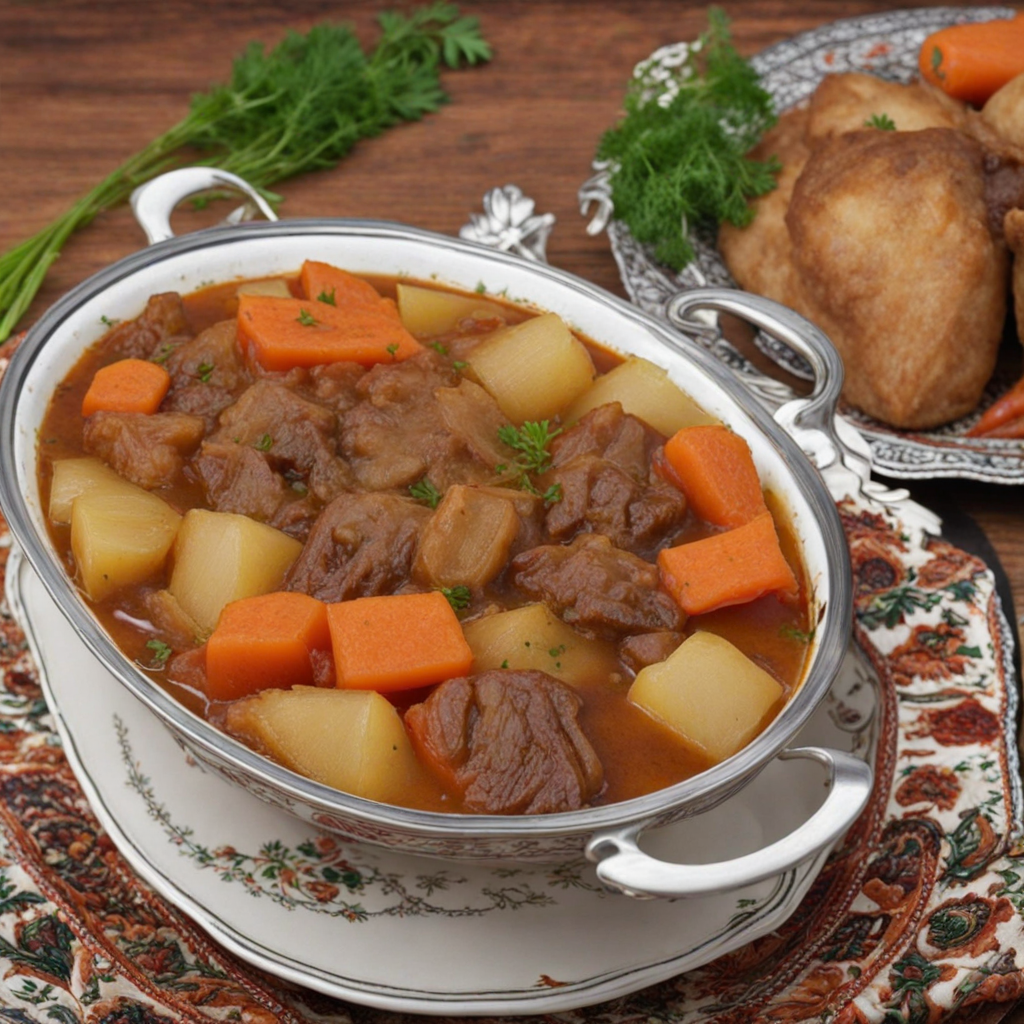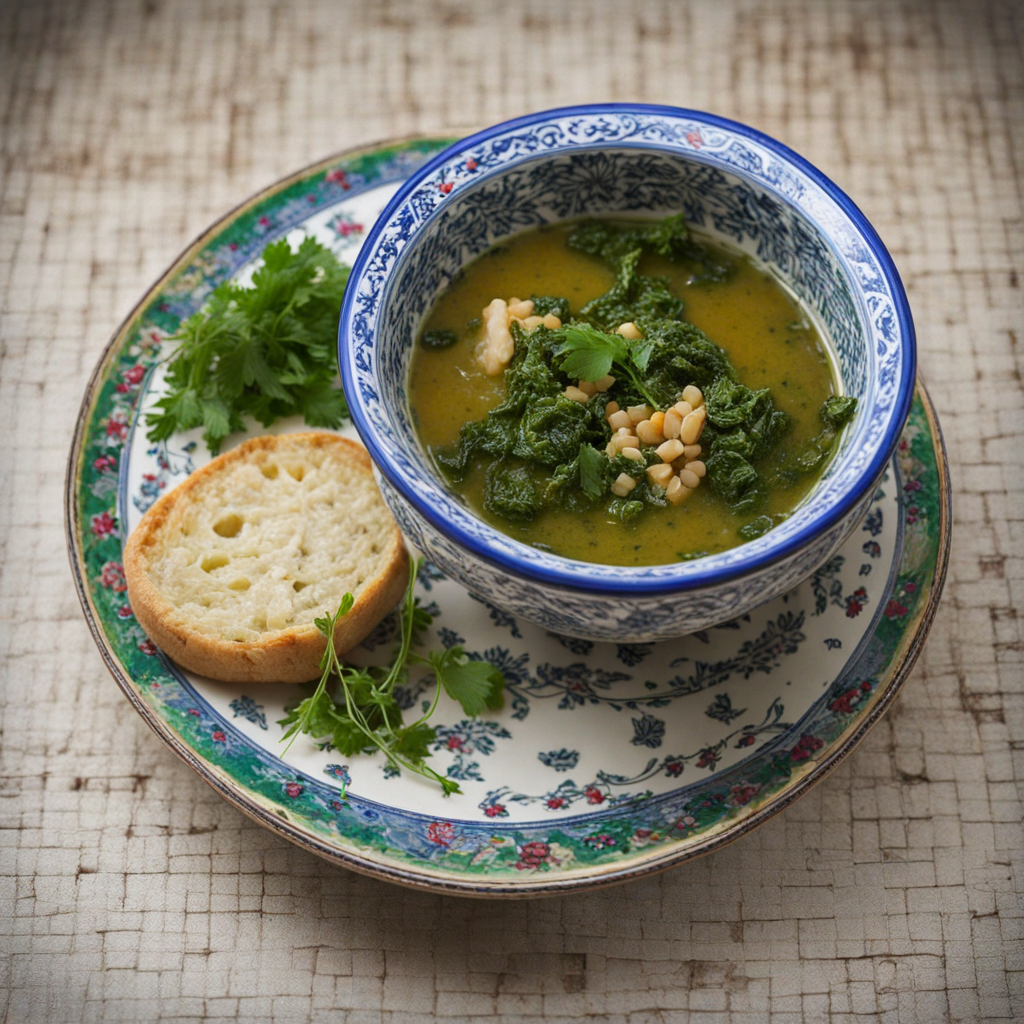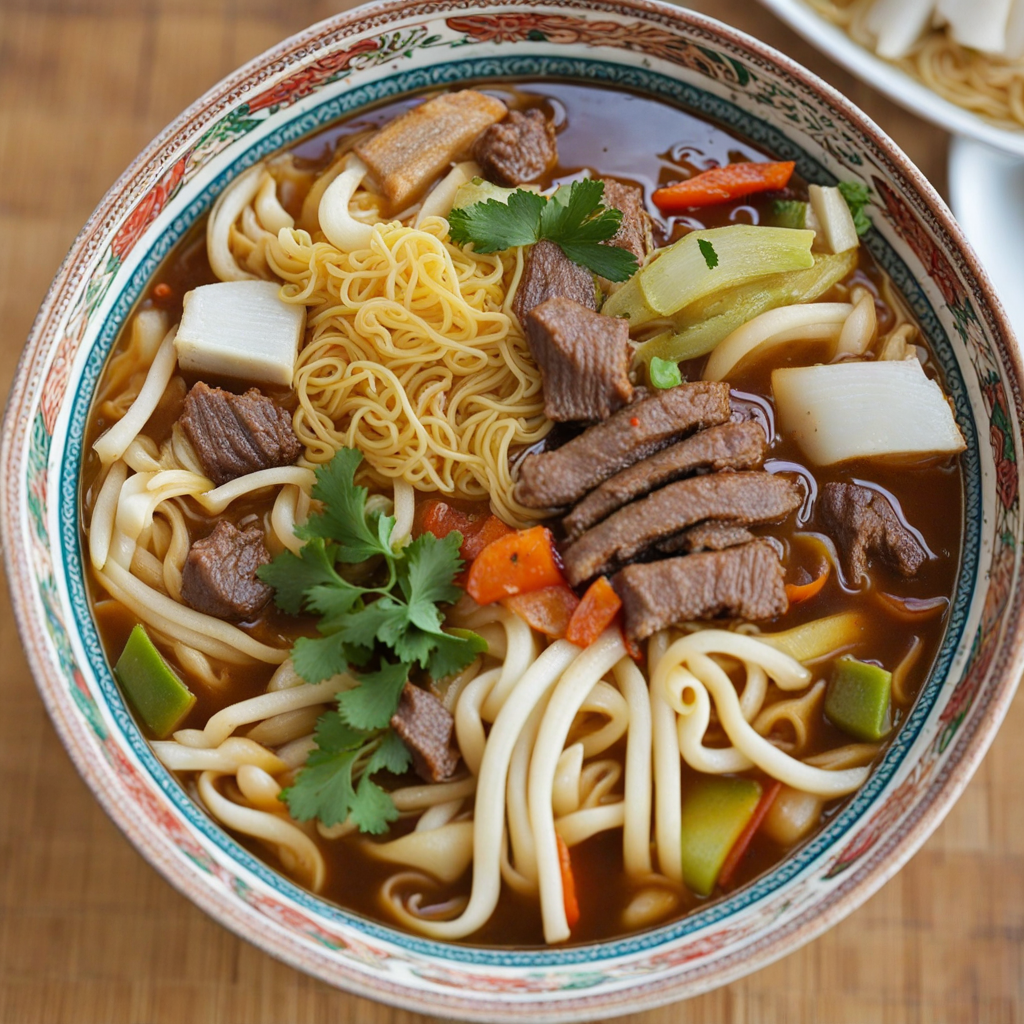Nisholda
Nisholda is a delightful Uzbek dish that showcases the country's rich culinary heritage through its unique combination of flavors and textures. This traditional meal typically features tender pieces of meat, often lamb or beef, slow-cooked to perfection with an array of aromatic spices and fresh vegetables. The meat is usually marinated beforehand, allowing it to absorb the fragrant notes of cumin, coriander, and garlic, which are staples in Uzbek cuisine. The result is a savory, melt-in-your-mouth experience that warms the heart and pleases the palate. What sets Nisholda apart is its distinctive cooking method, often prepared in a deep pot or a clay dish, which allows the ingredients to mingle and develop a robust flavor profile. Seasonal vegetables such as carrots, potatoes, and bell peppers are commonly added, lending a sweet and earthy balance to the dish. The inclusion of fresh herbs, like dill or parsley, not only enhances the aroma but also provides a vibrant color contrast, making it visually appealing as well. Traditionally served with a side of fragrant rice or warm, fluffy bread, Nisholda is a communal dish meant to be enjoyed with family and friends. Each bite offers a taste of Uzbekistan’s rich agricultural land, where the flavors of the region come alive. Whether enjoyed in a bustling market or at a family gathering, Nisholda embodies the spirit of Uzbek hospitality, inviting you to savor the warmth and depth of a culture steeped in culinary tradition.
How It Became This Dish
The Flavorful Journey of Нишолда: A Culinary Gem from Uzbekistan Nestled in the heart of Central Asia, Uzbekistan is a land rich in history, culture, and, of course, food. Among its culinary treasures is Нишолда (Nisholda), a dish that embodies the spirit of Uzbek hospitality and agricultural abundance. This dish is not just a meal; it represents a tapestry of traditions, regional ingredients, and a way of life deeply intertwined with the land and its people. Origins of Нишолда The origins of Нишолда can be traced back to the fertile valleys of Uzbekistan, where agriculture has flourished for millennia. The region's diverse climate and rich soil have allowed for the cultivation of a wide range of crops, particularly grains, fruits, and vegetables. Noodles, which are a staple in Central Asian cuisine, have a long history in this area, likely influenced by ancient trade routes such as the Silk Road. The dish Нишолда is believed to have emerged as a way to utilize local produce, especially during the harvest season. Traditionally, it is made using fresh vegetables, herbs, and handmade noodles, reflecting the local agricultural practices and seasonal availability of ingredients. The name "Нишолда" itself is thought to derive from the Uzbek word for "to nourish," highlighting the dish's role in providing sustenance and comfort. Cultural Significance Нишолда is more than just a meal; it is a symbol of Uzbek culture and communal values. In Uzbekistan, food is deeply tied to social interactions and celebrations. Нишолда is often prepared and shared during family gatherings, weddings, and other significant events. The act of cooking and sharing this dish encapsulates the essence of Uzbek hospitality, where guests are treated with the utmost respect and generosity. The dish also serves as a canvas for creativity and regional variation. Different regions of Uzbekistan may alter the ingredients or preparation methods, leading to numerous interpretations of Нишолда. For instance, in some areas, the dish may incorporate lamb or beef, while others might focus on a vegetarian version using seasonal vegetables. This adaptability not only reflects local preferences but also emphasizes the importance of community and regional identity in Uzbek cuisine. Ingredients and Preparation At its core, Нишолда consists of a base of handmade noodles, often referred to as "laghman," which are similar to Chinese lo mein but with a unique Uzbek twist. The noodles are typically made from simple ingredients like flour, water, and salt, kneaded to create a pliable dough, then rolled out and cut into thin strips. The technique of hand-pulling the noodles is a time-honored tradition that showcases the skill of the cook and adds a special texture to the dish. The vegetables used in Нишолда are a celebration of Uzbekistan’s agricultural bounty. Common vegetables include carrots, bell peppers, onions, and tomatoes, which are sautéed in oil to develop a rich flavor. Fresh herbs, such as cilantro and dill, are often added for an aromatic finish. Some variations of the dish may include a broth made from animal bones or vegetable stock, enriching the flavors and providing a comforting depth. The preparation of Нишолда is often a communal activity, with family members gathering to help roll out the noodles, chop vegetables, and mix ingredients, reinforcing social bonds and shared traditions. Development Through Time As Uzbekistan has evolved through the centuries, so too has Нишолда. The dish has seen influences from various cultures that have passed through the region, including Persian, Turkic, and Russian culinary practices. During the Soviet era, the dish adapted to incorporate available ingredients, leading to variations that sometimes included canned vegetables or processed noodles. However, even amid these changes, the essence of Нишолда remained rooted in traditional preparation and communal dining. In recent years, there has been a resurgence of interest in traditional Uzbek cuisine, both within the country and internationally. Chefs and home cooks alike are rediscovering the importance of using fresh, local ingredients and traditional cooking methods. This revival has led to a renewed appreciation for Нишолда, with many restaurants and food festivals showcasing the dish in its authentic form. Moreover, the global interest in culinary tourism has brought attention to Uzbekistan’s rich food culture, leading to an increase in the number of food enthusiasts eager to experience the flavors of Нишолда firsthand. This newfound recognition has not only helped preserve the dish but also allowed it to evolve further as chefs experiment with modern techniques while honoring traditional roots. Modern Interpretations and Global Presence Today, Нишолда can be found in various forms around the world, especially in regions with significant Uzbek diaspora communities. Restaurants serving Uzbek cuisine often feature Нишолда prominently on their menus, introducing it to new audiences eager to explore the flavors of Central Asia. The dish has also inspired fusion interpretations, where chefs incorporate elements from other culinary traditions while maintaining the essence of Нишолда. For example, some might use alternative grains for the noodles or introduce new spices that complement the traditional flavor profile. This creativity pays homage to the dish’s adaptability while inviting new generations to connect with its history. Conclusion The journey of Нишолда from its humble beginnings in the lush valleys of Uzbekistan to its role as a beloved dish in contemporary cuisine is a testament to the resilience and richness of Uzbek culture. As it continues to evolve, Нишолда remains a culinary emblem of community, tradition, and the agricultural heritage of Uzbekistan. For anyone interested in experiencing authentic Uzbek cuisine, Нишолда offers not just a taste of the region's flavors but also a glimpse into its heart—where food is a bridge between generations, a source of comfort, and a celebration of life’s moments, big and small. Whether enjoyed in a bustling market, at a family gathering, or in a restaurant halfway across the world, Нишолда serves as a reminder of the power of food to connect us all.
You may like
Discover local flavors from Uzbekistan







